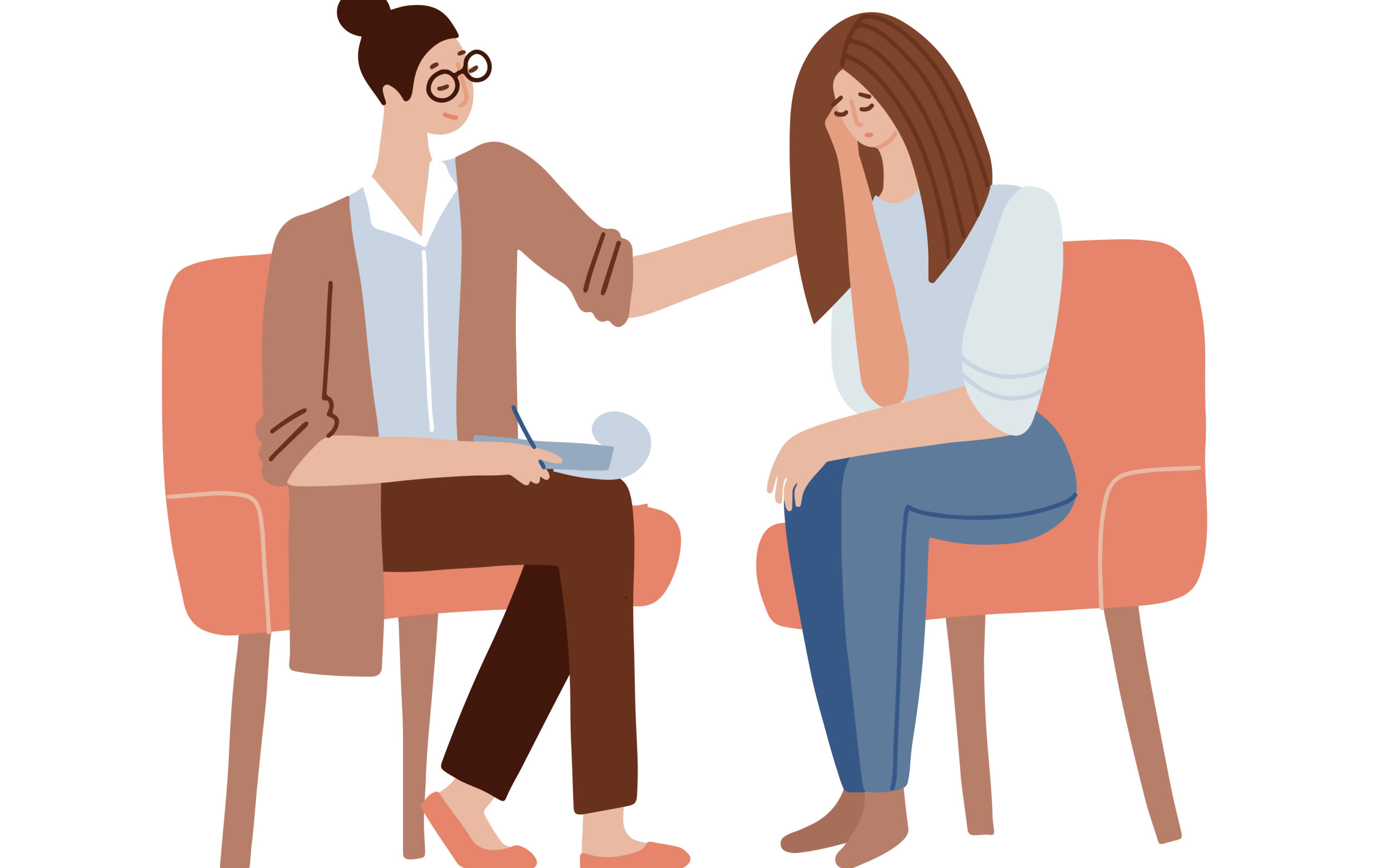Psych Treatment: A Comprehensive Overview to Methods and Outcomes

Cognitive-Behavioral Therapy
Cognitive-Behavioral Treatment (CBT) is an extensively utilized psychotherapeutic strategy that concentrates on determining and customizing inefficient reasoning and habits patterns. Created in the 1960s by Aaron T. Beck, CBT integrates cognitive and behavioral theories to resolve various mental health and wellness problems, consisting of depression, stress and anxiety, and stress-related conditions. The property of CBT is that maladaptive ideas add to emotional distress and maladaptive habits. By reorganizing these thoughts, people can achieve significant improvements in their emotional wellness and daily performance.
Techniques such as cognitive restructuring, direct exposure therapy, and skill-building workouts are commonly used. Cognitive restructuring entails tough and changing unfavorable thought patterns, while exposure treatment aims to decrease worry and anxiety via progressive exposure to feared scenarios or objects.
Evidence-based study sustains the efficacy of CBT for a variety of emotional conditions - Best Psychologist in Delhi. Its focus on ability acquisition and self-help strategies encourages customers to proceed progression separately after therapy ends. The versatility and effectiveness of CBT have actually made it a cornerstone in modern psychotherapeutic practice
Psychodynamic Methods
Rooted in the early theories of Sigmund Freud, psychodynamic methods concentrate on checking out the unconscious mind and its influence on actions and feelings. These methods intend to uncover concealed ideas and sensations that might be driving maladaptive behaviors and psychological distress. Central to this approach is the idea of inner dispute, often originating from unsettled previous experiences, particularly those from youth.
Therapists utilizing psychodynamic methods use a number of crucial approaches, consisting of complimentary organization, where patients are motivated to talk freely to reveal subconscious product, and dream analysis, which interprets the unrealized content of dreams. Additionally, the exploration of transference and countertransference characteristics within the restorative connection is critical. These interactions can supply understandings into the person's inner globe and relational patterns.
Psychodynamic therapy is generally longer-term compared to various other techniques, offering a detailed and deep understanding of the person's mind. Study shows that it can be specifically reliable for complicated mental wellness issues, such as individuality problems and persistent depression. By fostering self-awareness and emotional insight, psychodynamic therapy looks for to bring subconscious material to awareness, making it possible for individuals to attain lasting and meaningful adjustment in their lives.
Humanistic Strategies
Building on the foundations laid by psychodynamic methods, humanistic methods use an unique point of view concentrated on individual potential and self-actualization. Stemming in the mid-20th century, these methods focus on the intrinsic benefits and development capacity of people, emphasizing an all natural view of human experience. Key figures such as Carl Rogers and Abraham Maslow have actually dramatically affected this therapeutic approach, which incorporates techniques like client-centered therapy and Gestalt treatment.
Client-centered therapy, developed by Rogers, plays a crucial role in humanistic strategies. The specialist's duty is even more of a facilitator than an authority, urging customers to harness their inner sources for recovery.
Gestalt treatment, one more important humanistic technique, stresses present minute awareness and the combination of mind and body. By concentrating on the "present moment," clients gain greater insight right into their present feelings and actions. Techniques such as role-playing and guided visualization are usually utilized to aid clients get a much deeper understanding of themselves, inevitably bring about improved self-awareness and gratification.
Integrative Treatments
Integrative therapies stand for a synthesis of different restorative methods tailored to satisfy the one-of-a-kind needs of each client. This method recognizes the intricacy of human psychology and the multifaceted nature of psychological health and wellness issues. By integrating aspects from various schools of psychotherapy-- such as cognitive-behavioral therapy (CBT), psychodynamic therapy, and humanistic methods-- integrative treatments use an even more adaptable and alternative therapy paradigm.
Practitioners of integrative treatment examine each client's specific demands, signs, and personal history to design a personalized therapy strategy. This personalized method boosts the possibility for healing success by addressing the source of mental distress and advertising overall wellness. Techniques might consist of mindfulness workouts, cognitive restructuring, and emotional processing, each chosen to target different aspects of the customer's problems.
Furthermore, integrative treatments highlight the restorative connection, viewing the client-therapist bond as a critical part of efficient therapy. This relationship promotes an encouraging atmosphere where customers feel safe to explore and resolve their problems. The versatility of integrative therapies makes them ideal for a wide variety of problems, consisting of anxiety, depression, trauma, and social problems, thereby enhancing their applicability and effectiveness in diverse clinical settings.

Measuring Therapy Results
Reviewing the great post to read performance of psychiatric therapy is crucial for both customers and clinicians to make sure that the treatment is yielding the wanted outcomes. To accomplish this, various methods and devices are used to measure treatment results methodically. Standardized evaluation instruments, such as browse around here the Beck Anxiety Supply (BDI) and the Generalized Anxiousness Problem 7 (GAD-7), supply quantitative information on sign severity and changes gradually.
Along with standardized devices, qualitative methods like client self-reports and professional meetings offer important understandings into the individual experiences and perceived progress of clients. Routinely set up assessments, commonly at the beginning, axis, and end of therapy, help in tracking the trajectory of enhancement or recognizing areas requiring modification.
Result dimension is not restricted to symptom reduction; it likewise includes useful enhancements in day-to-day live, such as far better social connections, boosted job productivity, and enhanced overall wellness. Modern advancements in digital health have introduced mobile apps and on the internet systems that promote real-time tracking and responses, better improving the evaluation procedure.
Inevitably, a thorough strategy to gauging treatment outcomes ensures that therapeutic treatments are reliable, effective, and tailored to fulfill the specific needs of customers, therefore maximizing the overall therapeutic experience.
Conclusion
Humanistic strategies concentrate on individual growth pop over to this web-site and self-actualization, while integrative treatments integrate numerous approaches for customized treatment plans. Reviewing therapy outcomes with qualitative methods and standard assessments makes sure a comprehensive understanding of performance, eventually leading clients toward withstanding psychological health enhancements.
From the organized strategy of Cognitive-Behavioral Therapy (CBT) to the deep expedition of the subconscious in psychodynamic treatment, each method brings one-of-a-kind advantages. Its focus on skill procurement and self-help techniques equips customers to proceed development individually after therapy concludes (Best Psychologist in Delhi). Trick figures such as Carl Rogers and Abraham Maslow have actually dramatically affected this therapeutic technique, which encompasses techniques like client-centered treatment and Gestalt therapy
